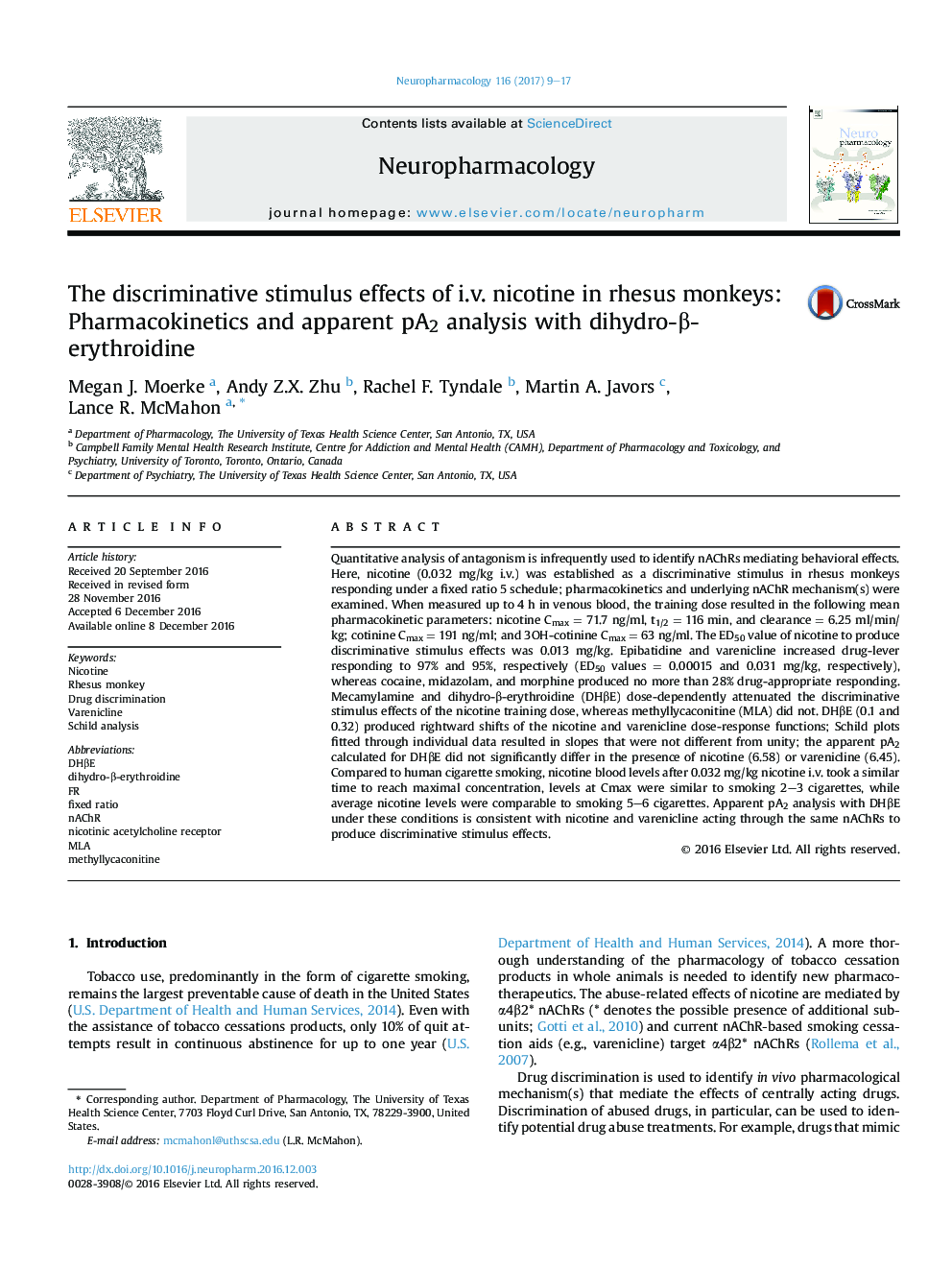| Article ID | Journal | Published Year | Pages | File Type |
|---|---|---|---|---|
| 5548925 | Neuropharmacology | 2017 | 9 Pages |
Quantitative analysis of antagonism is infrequently used to identify nAChRs mediating behavioral effects. Here, nicotine (0.032 mg/kg i.v.) was established as a discriminative stimulus in rhesus monkeys responding under a fixed ratio 5 schedule; pharmacokinetics and underlying nAChR mechanism(s) were examined. When measured up to 4 h in venous blood, the training dose resulted in the following mean pharmacokinetic parameters: nicotine Cmax = 71.7 ng/ml, t1/2 = 116 min, and clearance = 6.25 ml/min/kg; cotinine Cmax = 191 ng/ml; and 3OH-cotinine Cmax = 63 ng/ml. The ED50 value of nicotine to produce discriminative stimulus effects was 0.013 mg/kg. Epibatidine and varenicline increased drug-lever responding to 97% and 95%, respectively (ED50 values = 0.00015 and 0.031 mg/kg, respectively), whereas cocaine, midazolam, and morphine produced no more than 28% drug-appropriate responding. Mecamylamine and dihydro-β-erythroidine (DHβE) dose-dependently attenuated the discriminative stimulus effects of the nicotine training dose, whereas methyllycaconitine (MLA) did not. DHβE (0.1 and 0.32) produced rightward shifts of the nicotine and varenicline dose-response functions; Schild plots fitted through individual data resulted in slopes that were not different from unity; the apparent pA2 calculated for DHβE did not significantly differ in the presence of nicotine (6.58) or varenicline (6.45). Compared to human cigarette smoking, nicotine blood levels after 0.032 mg/kg nicotine i.v. took a similar time to reach maximal concentration, levels at Cmax were similar to smoking 2-3 cigarettes, while average nicotine levels were comparable to smoking 5-6 cigarettes. Apparent pA2 analysis with DHβE under these conditions is consistent with nicotine and varenicline acting through the same nAChRs to produce discriminative stimulus effects.
